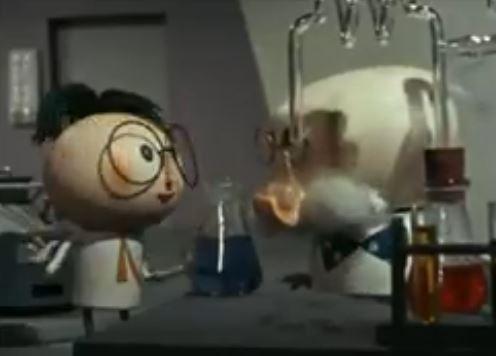The Story of Tanukichi: A Captivating Story and Deep Character Insights

The story of Tanukichi - Tanukichi no ohashi■ Public Mediatheater ■ Original MediaAnime Original ■ Release dateJune 1931 ■Frequencies17 min ■ Number of EpisodesEpisode 1 ■Original StoryYasushi Murata ■ DirectorIllustration by Yasuji Murata ■ ProductionYokohama Cinema Company Commissioned by the Ministry of Education ■ Story When an old man in a fairy tale blows a bubble, the bubble grows arms and legs and turns into many raccoon dogs. Holding hands, the raccoon dogs begin to play raccoon music in the garden of Shojoji Temple. Tanukichi, who is the last to blow a bubble, has a small belly and is unable to beat his belly properly like the others. Sad, Tanukichi leaves the scene. On the way, he picks up a bicycle pump and while inflating his belly, he pumps too much air and floats up into the sky. Finally, he arrives on the moon. Not listening to the advice of the moon, Tanukichi flies around the sky, wanting to show off his big belly to the world, but beats his belly too much and it bursts. Tanukichi crashes into the garden of Shojoji Temple, and the old man in the fairy tale sucks him up into a straw and gently admonishes him. The theme is not to envy others and do stupid things. ■ExplanationCommissioned by the Ministry of Education. A moral teaching anime. ■ Main staff・Screenplay: Chuzo Aoike ・Illustration: Yasuji Murata ・Cinematography: Yukiki Ueno ・Music: Miyata Harmonica Band ・Sound recording: PCL ■Detailed evaluation and recommendationReleased in 1931, "The Story of Tanukichi" is an animated film directed by Yasuji Murata, and is one of the most iconic works from the dawn of Japanese animation at the time. This work is a moral animation commissioned by the Ministry of Education, and its purpose is to convey moral lessons to children. Below, we will take a closer look at the story, production background, technical features, and evaluation and recommendation of this work from a modern perspective. The appeal of the storyThe story of "The Story of Tanukichi" is simple, yet contains a profound moral. It begins with a fantastical plot in which an old man from a fairy tale blows a soap bubble, which transforms into a tanuki (raccoon dog) and begins to play tanuki music in the garden of Shojoji Temple. Tanukichi, the protagonist, is unable to beat his belly like the other tanuki, and feeling inferior, tries to use a bicycle pump to inflate his belly. However, he puts in too much air, and the story continues with a humorous twist in which he flies all the way to the moon. In the end, he ignores the moon's warning and beats his belly too much, causing his stomach to burst. This story teaches us the foolishness of envying others, and the importance of acknowledging our own limitations. Background and significance of the productionThis work was commissioned by the Ministry of Education, so its educational significance is emphasized. Educational films were actively produced in Japan in the 1930s, and "The Story of Tanukichi" is positioned as part of that trend. Director Yasuji Murata was a pioneer in the Japanese animation world at the time, and his works are highly acclaimed for their technical and artistic merits. In particular, this work makes full use of the technology of the time in scenes such as when soap bubbles transform into raccoon dogs and when Tanukichi floats up into the sky. Technical features"The Story of Tanukichi" is an animated film made as early as 1931, and its technical features are noteworthy. At the time in Japan, animation production was still in the experimental stage, and Yasuji Murata developed his own techniques within that field. In particular, the scene in which the soap bubbles transform into raccoon dogs creates a fantastical atmosphere by combining hand-drawn animation with special effects. Also, in the scene in which Tanukichi floats into the sky, the movement of the background and the movement of the character are skillfully linked to create a visual impact. These technical innovations had a major impact on the later development of Japanese animation. A modern perspectiveFrom a modern perspective, "The Story of Tanukichi" is appreciated for its simple story and moralistic content. In particular, when viewed as an educational anime for children, it is very effective. Through Tanukichi's actions, we can learn the dangers of envying others and the importance of accepting our own limitations. It is also interesting to see how Yasuji Murata expressed the story within the technical constraints of the time. When compared to modern animation technology, the ingenuity and effort put into it are even more striking. Recommendations and how to watch"The Story of Tanukichi" is especially recommended for those who are interested in the history of animation and educational animation. It is also useful for parents and educators who want to teach moral lessons to children. The film is now available on DVD and online streaming services. It is especially valuable as a resource for the history of Japanese animation films, so if you are interested, please give it a watch. Related works and recommendationsOther Japanese animation works produced around the same time as "The Story of Tanukichi" are also interesting. For example, "Momotaro's Sea Eagle" (1943) and "Urashima Taro" (1935), both directed by Yasuji Murata, show the technology and artistry of the time. In addition, modern educational animations such as "Doraemon" and "Crayon Shin-chan" also share the common theme of conveying moral lessons to children. By watching these works together, you will be able to gain a deeper understanding of the significance and appeal of "The Story of Tanukichi." summary"The Story of Tanukichi" is a moral anime released in 1931 by director Yasuji Murata, and has been praised for its simple storyline and technical features. It is especially beneficial for children, as it teaches them the folly of envying others and the importance of acknowledging one's own limitations. Even from a modern perspective, its historical value and educational significance can be felt. It is a must-watch for anyone interested in the history of animation and educational anime, as well as parents and educators who want to convey moral lessons to their children. |
<<: The appeal and reputation of the manga "Spring": A thorough analysis of the moving story
Recommend
The second season of TV animation "Re:Zero" will be broadcast in 2023
The second season of the new TV animation "M...
'Chernobyl' director to direct 'The Last of Us' TV pilot
The TV series "The Last of Us" will be ...
The appeal and reviews of the PC Travel Detectives: The unmissable world of detective anime
PC Travel Detectives: A Time Capsule from the 80s...
Hard, exciting and violent! Liu Qingyun's "Detective Wars" is scheduled to be released on July 8
The crime action suspense film "The Detectiv...
The best voice actor is the best planner! Popular voice actor Aoi Yuuki plans to produce a new "Orc" animation
The new "Orc" animation, written, plann...
"My Plue" review: What is the appeal of Minna no Uta?
"My Plue": NHK's classic anime and ...
21 years of memories return! The new TV animation "Digimon Adventure" is scheduled to premiere on April 5
The official release date of the new Digimon anim...
"I Am Your Tears": A moving and tear-jerking classic anime with reviews and recommended points
All-round review and recommendation of I Am Your ...
Jeremy Renner hints at returning as Hawkeye in Avengers 5
Jeremy Renner has hinted that he will return as H...
The screenwriter of "Arrival" created the sci-fi suspense film "Extinction" scheduled for January 18
Today (January 3), the sci-fi suspense masterpiec...
The latest trailer of the famous animated film "Pouper of Chimney City" will be released on December 25th
The animated film based on the best-selling Japan...
A thorough analysis of the appeal and excitement of "Shugo Chara!!! DokkiDoki"!
Shugo Chara!!! Dokidoki - A heartwarming new stor...
Gundam's significance to the world is not just about mobile suits. Some of its famous quotes are still relevant today and in the past.
Since its debut in 1979, "Mobile Suit Gundam...
Armored Trooper Votoms: The appeal of a realistic battlefield and a profound story
Armored Trooper Votoms ■ Public Media TV anime se...
The American version of the classic reality show "Iron Chef" will be released on Netflix on June 15
Netflix recently announced that the American vers...









